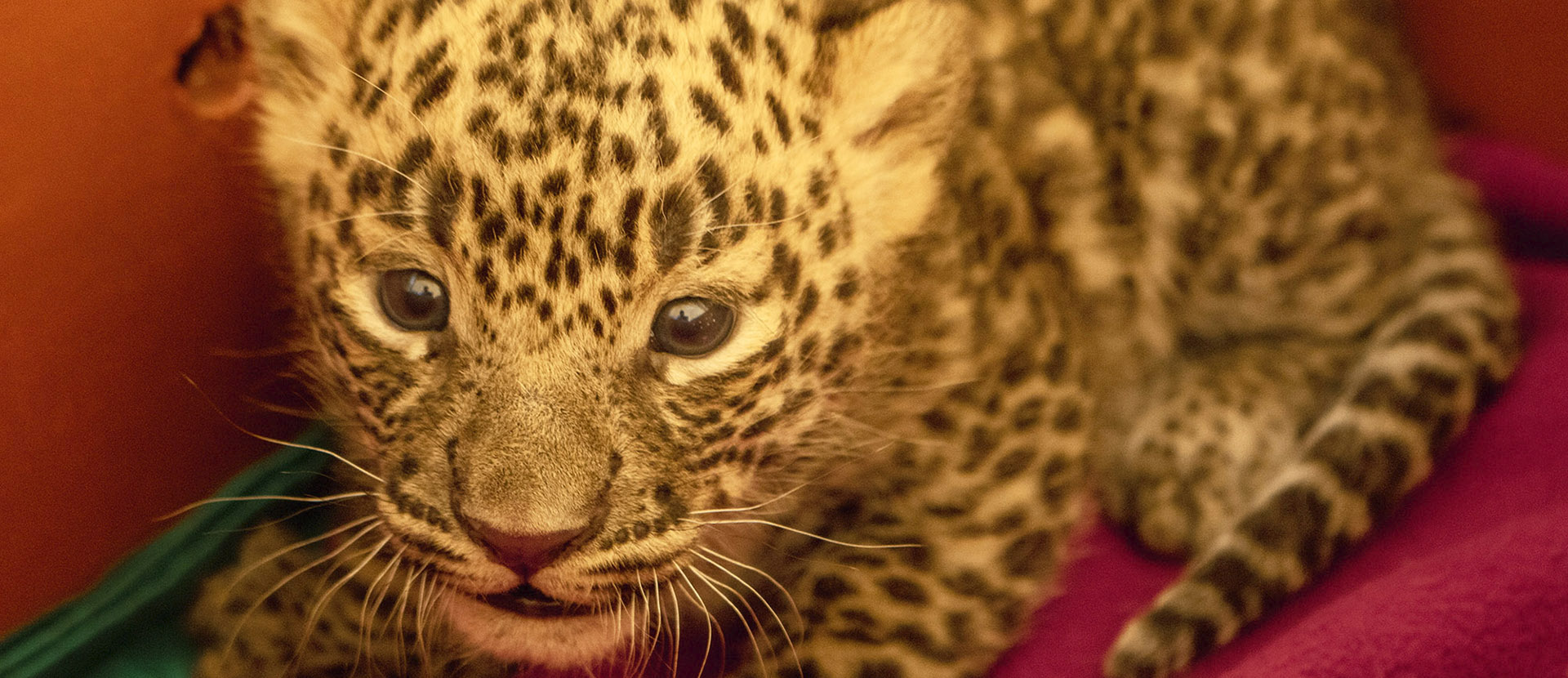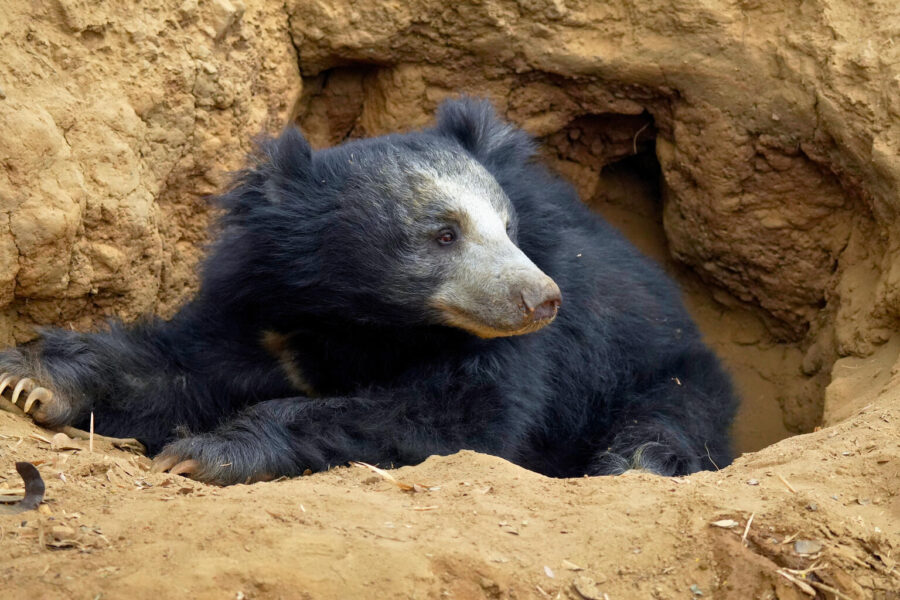Not even three days into the New Year and the Wildlife SOS team is already on its toes. But doing what? Rescuing leopard cubs of course! ‘Tis the season of harvest, which not only brings hope but also a few adventures, since it coincides with the birthing period for expecting leopard mothers. That is what happened when farmers from Nirgude village in the Junnar division of Maharashtra discovered two tiny leopard cubs while harvesting sugarcane.
The cubs were safely reunited with their mother by Wildlife SOS and the Maharashtra Forest Department. But before telling you about the heartwarming reunification, let us give you a bit of context. The sugarcane farmers of Maharashtra have to tread extra cautiously because leopards use the thick foliage of sugarcane fields to give birth. They usually do this to protect their cubs and keep them hidden in the tall, dense stalks, away from the sight of lurking predators.
But this leaves the cubs at a risk of being found by humans working in the sugarcane fields. This time when the farmers found the two cubs, they immediately informed the Forest Department, who rushed to their aid. The cubs were later brought to the Wildlife SOS Manikdoh Leopard Rescue Centre for medical examinations.
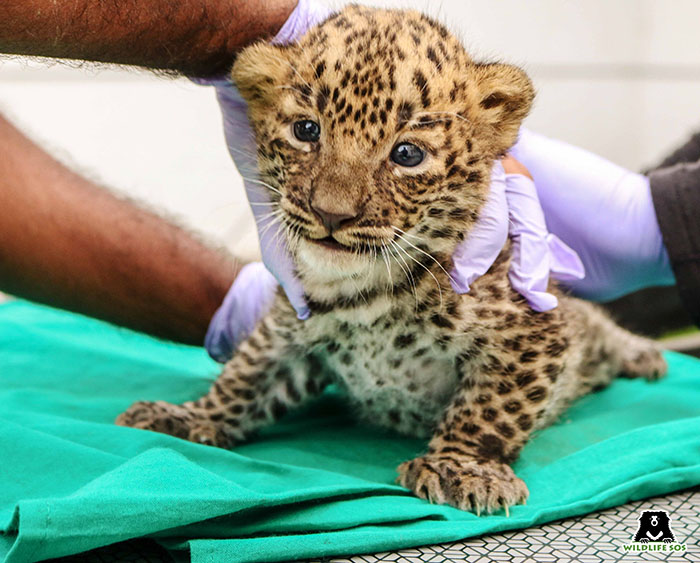
The examinations are usually done to ascertain their age, whether they are wounded, suffering from any infection or showing signs of dehydration. Dr. Nikhil Bangar, Veterinary Officer from the Wildlife SOS team identified the cubs as one male and one female, estimated to be about 45 days old. Dr. Nikhil also conducted a meticulous examination for ticks and injuries, and found the cubs to be fit to return to their mother.
Wildlife SOS & the Forest Department facilitated the reunion by placing the cubs in a safe box, close to where they were discovered and installed a remote controlled camera trap to document the reunion process. Having completed numerous leopard reunions in the past, we were certain that the worried mother would come looking for her cubs, and after almost 20 minutes of patiently waiting for the leopard, she finally arrived.
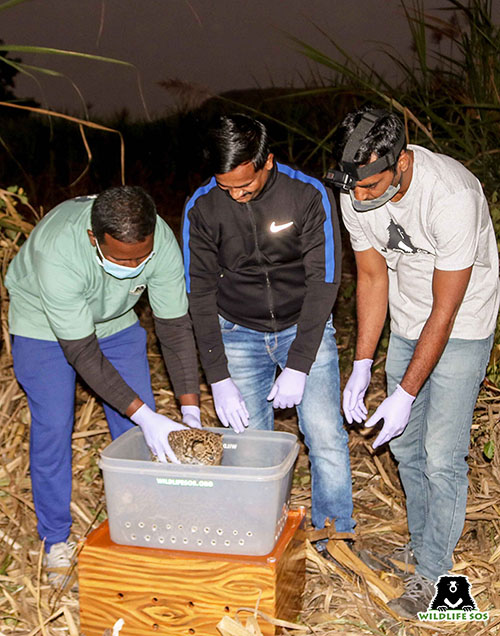
The mother must have been searching for her cubs, since she was able to sniff them out very quickly. On reaching the box, she patiently waited to ensure no danger stood in the way and cleverly used her paws to tip it over. She then moved her cubs to a safer location. Wildlife SOS makes every effort to make such reunions possible. The rescue team has also lined the safe boxes with scent markings in the past, like the cubs’ urine drops to assist the mother leopard in locating her cubs more easily.
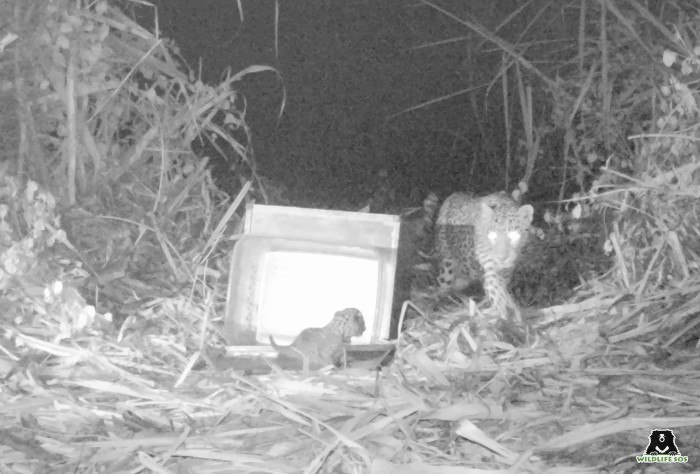
In Maharashtra, farmers often find leopard cubs as young as 15 days to 2 months old. This happens because the mother goes out hunting, as a result of which her cubs remain unguarded and often villagers spot the cubs before the mother returns to feed them. So whenever we get such calls, we try to execute the reunion as soon as possible because any delay could cause the mother leopard to move further away from the original location. Any possibility of the cubs not being reunited would mean they cannot survive in the wild on their own, and this might lead to a life in captivity. That is why every reunion is extremely important since these cubs deserve to live in the wild.
It is not at all an uncommon sight for farmers to be exposed to young leopard cubs taking up shelter in sugarcane fields in Maharashtra. But living in close quarters with leopards, the local communities and farmers play a very important role in conflict mitigation and encouraging the idea of co-existence.
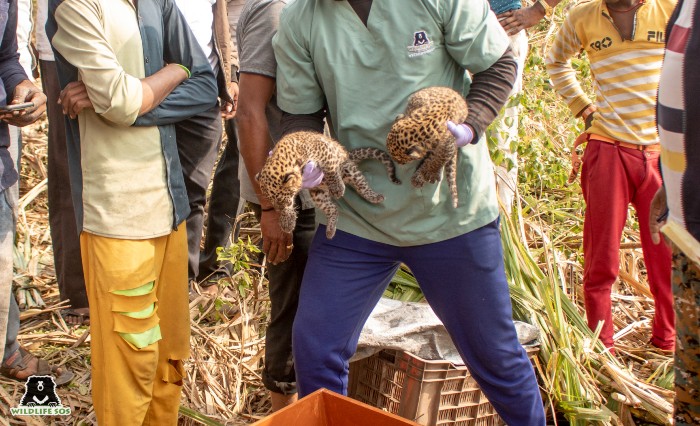
Over the years, Wildlife SOS has partnered with the state forest department to conduct many workshops and awareness modules which have shown significant results, indicated by the increasing number of phone calls we get for rescuing distressed wildlife. It has been our sincere effort to mitigate conflict in these areas, and we are incredibly grateful to the forest department for being such a staunch support and the local residents, who are keeping avoidance and mitigation teachings in mind when dealing with the leopards.

